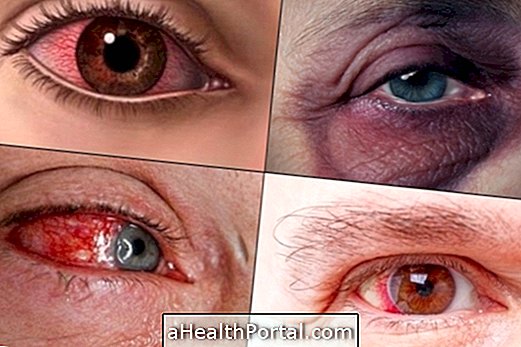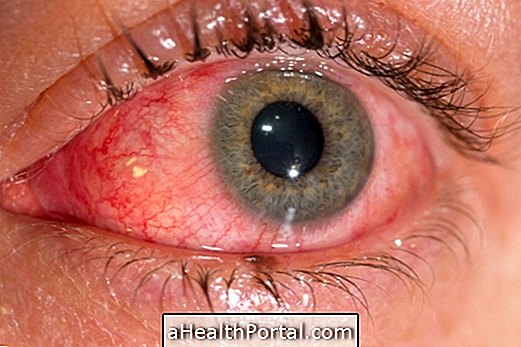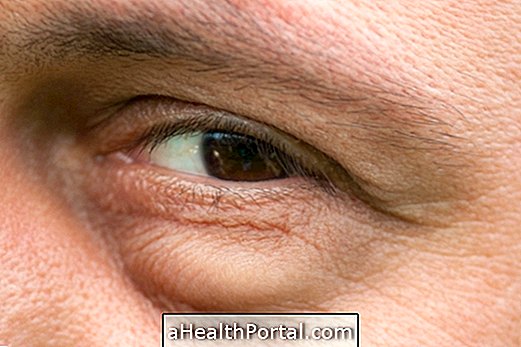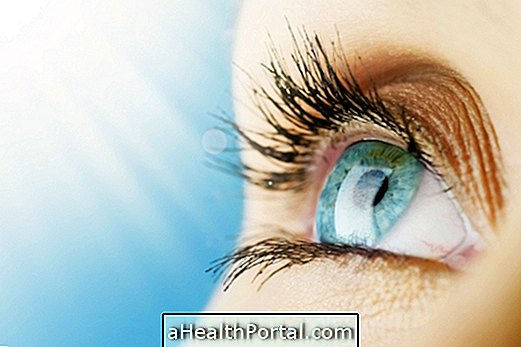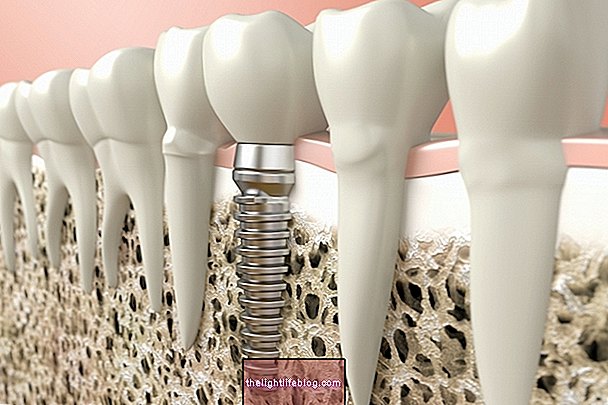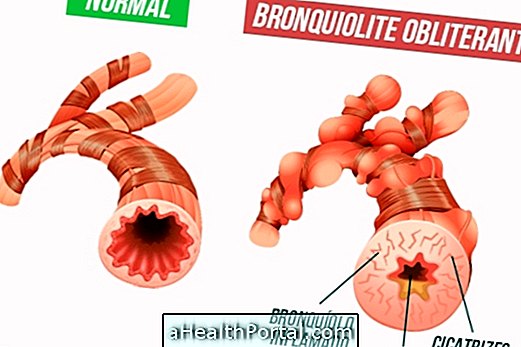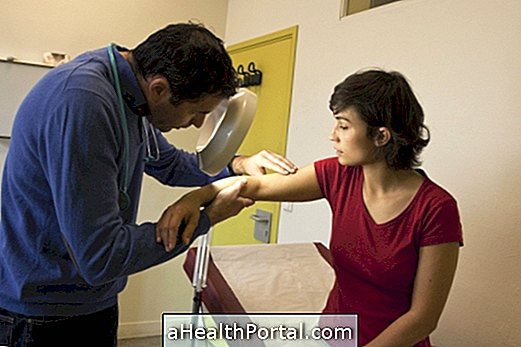Blepharitis is an inflammation at the edges of the eyelids that causes the appearance of pellets, scabs and other symptoms such as redness, itching and the sensation of having a speck in the eye.
This change is common and can appear overnight, in people of any age, including babies, and is caused by a change in the Meibomius glands, responsible for maintaining the balance of ocular moisture. Thus, when there is a blepharitis these glands are no longer able to produce the oil necessary to contain the tears, which potentiates the inflammation, being necessary to be evaluated by an ophthalmologist.
Other diseases that also affect the eyelids of the eyes are the stye, scientifically called hordeolo, an alteration where the eyelids are also red and swollen and therefore whenever the eyes are irritated, red, swollen or itchy one should go to the doctor. See what are the main causes of itchy eyes.
-e-como-tratar.jpg)
Main symptoms
Blepharitis is not a contagious disease and symptoms include:
- Redness and swelling of the eyelids of the eyes;
- Presence of crusts and scales on the eyelids
- Itching and irritation in the eyes;
- Sensation that there is a speck in the eye;
- Constant tearing of the eyes;
- Photophobia, which is the difficulty of keeping your eyes open in the sun.
In addition, other symptoms that are usually present are loss of eyelashes and during sleep the eyelids may stick together, making it difficult to open your eyes upon waking.
Increased pollution, excess skin oil, dust, dry air and excessive use of air conditioning can facilitate the installation of blepharitis.
How the treatment is done
The treatment for blepharitis is simple and can be done with the correct cleaning of the eyes using eye drops to clean the eyes and remove the scabs and puffs. But it can be useful to put a warm compress on your eyes daily for 2 to 3 minutes, about 3 to 4 times a day, until complete remission of symptoms.
When the individual has blepharitis caused by ocular rosacea, the use of antibiotics in the form of pills is recommended. However, the doctor may also recommend the use of antibiotic ointments, containing tetracycline or sulfa, which should be applied to the eyes before sleeping, because they can make the vision blurry.
How to care for the eyelid at home
In the home treatment for inflammation of the eyelids, one should opt for the consumption of anti-inflammatory foods such as salmon, orange and acerola to accelerate healing. See more examples of foods that help cure blepharitis faster by clicking here.
In addition, chamomile compresses can help soothe the skin and irritation, bringing relief from symptoms. Just prepare a chamomile tea with 1 tablespoon of chamomile flowers in 1 cup of boiling water and let it stand for 5 minutes. Then strain and the solution is ready to be used.
To properly clean your eyes during blepharitis, you must:
- Wash hands;
- Put a few drops of eye drops or chamomile tea right after its preparation on a cotton swab, gauze or compress - See what are the types of eye drops and what they are for;
- Look upwards while cleaning the lower eyelid and close the eye while cleaning the upper eyelid;
- Wash your hands again.
You should not try to remove the scabs without using the eye drops because removing them can leave the area very, sensitive and irritated.
As long as these symptoms are present, makeup and contact lenses should be avoided as much as possible to speed up the healing process. The treatment time can vary from weeks to up to 1 or 2 months, and in cases of longer delay there are associated diseases, which must also be correctly treated so that blepharitis can be cured.
Signs and improvement
The signs of improvement appear after the beginning of the treatment with the reduction of crusts and eye irritation.
Signs of worsening
They are characterized by the permanence or worsening of symptoms, such as frequent feeling of sand, redness that does not improve and persistent secretion.
Possible complications
Complications can arise due to the increase in bacteria, which triggers stronger signs of allergy, such as severe itching and irritation in the eyes. These can also occur due to poor eye hygiene or incorrect application of the recommended medications, so in these cases the doctor may recommend the use of corticosteroids in ointment.
The best way to avoid blepharitis is not to rub your hands over your eyes and keep the area properly clean.
Was this information helpful?
Yes No
Your opinion is important! Write here how we can improve our text:
Any questions? Click here to be answered.
Email in which you want to receive a reply:
Check the confirmation email we sent you.
Your name:
Reason for visit:
--- Choose your reason --- DiseaseLive betterHelp another personGain knowledge
Are you a health professional?
NoMedicalPharmaceuticalsNurseNutritionistBiomedicalPhysiotherapistBeauticianOther
